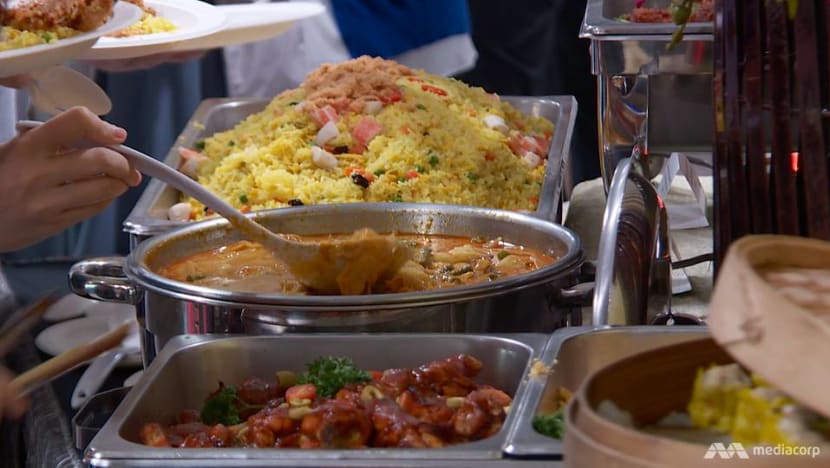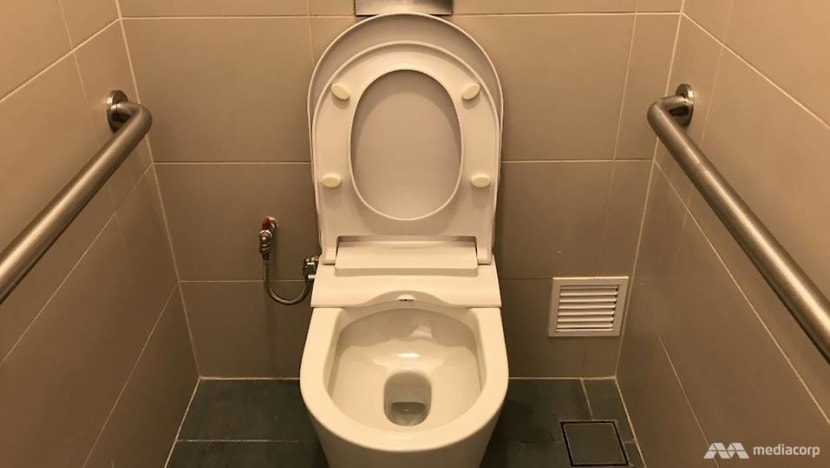Food poisoning: What are the chances of getting it from catered food?

The “temperature danger zone” for cooked food is between 5°C and 60°C.
SINGAPORE: Catered food, whether served at buffets or through bento boxes, has left a bitter aftertaste after some firms serving up such items were found to be behind recent food poisoning incidents.
In November last year, a 38-year-old man died after eating contaminated catered food from Spize Restaurant @ River Valley. The restaurant is no longer operating.
Spize was not the only culprit. Four other mass food poisoning cases were reported between October and December 2018 involving Team Catering, Tung Lok Catering, FoodTalks Caterer & Manufacturer and the Mandarin Orchard Hotel.
More recently, in April this year, 230 pupils at Zhenghua Primary School in Bukit Panjang suffered gastroenteritis.
A joint inspection of the school canteen was conducted and 16 food handlers were sent for stool screening as part of the investigations.
The Ministry of Health and Singapore Food Agency also said on Jun 22 that two catering companies, Chilli Api Catering and Pro*3 Institutional Catering, have had their food hygiene grade cut to "C" after 45 people fell ill in separate incidents of food poisoning.
In one case, employees of Jurong Polyclinic fell ill in December last year, while in the other, people from the National Junior College Boarding School were affected.
But what are the chances of you getting food poisoning from eating catered food and meals bought from eateries?
CNA put three food options to the test with the help of a food safety expert at Nanyang Polytechnic (NYP).
The items were a salmon salad ordered through a delivery service, a catered bento box comprising fish with ginger and spring onion, and a chicken and cabbage mixed rice set bought from a hawker stall.
READ: Five things you should know about food poisoning
READ: Food poisoning – can you really avoid it?
The food was measured at three different times for the amount of bacteria in them - at “zero” hours when they were received for testing, with further testing again at the four- and six-hour marks.
WHAT WE FOUND
At zero hours, the cooked food had a bacteria count of just 300, the bento box had 64,000, and the salmon salad already had a count exceeding the 100,000 "safe" threshold, beyond which there is a potential health risk for those with lower immunity, with the possibility that consuming the food could cause diarrhoea or vomiting.
The bacteria count continued to rise as the hours passed. At four hours, the cooked food bacteria count doubled to 600, and the bento set had exceeded the 100,000 safe level.
READ: MOH, SFA investigating gastroenteritis cases at NUS residential college after 22 fall ill
At six hours, the mixed rice still only had a bacteria count of 920 - while the count for the bento set and salmon salad continued to accelerate further past the "safe" point.
WHAT THE RESULTS MEAN
Healthy people may consume food which has a bacteria count exceeding 100,000 without suffering any ill effects, explained Mr Richard Khaw, deputy director of Nanyang Polytechnic's (NYP) School of Chemical and Life Sciences. But it can result in unpleasant consequences for those with lower immunity, he added.
“People with weak immune system, for example, the elderly, young kids, those who have been through treatment like chemotherapy, their immune system is weaker. With this sudden load of 100,000 or above bacteria count, they may have symptoms of stomach upset,” he said.

The fact that the salmon salad had a bacteria count of more than 100,000 even at zero hours came as no surprise to infectious diseases expert Dr Leong Hoe Nam. He pointed to the presence of uncooked ingredients in that dish.
“Even if you wash the vegetables, that does not clear the bacteria. Give it time, and the bacteria will re-establish itself,” he said.
The bento set was in the safe zone at zero hours, but the bacteria count crossed into the unsafe zone at the four-hour mark.
“Pre-packed boxes are a very, very poor choice. Between preparation and the food entering the mouth, the lead time is long,” said Dr Leong.
This is why guidelines recommend that catered food be consumed within four hours, Mr Khaw said.
On why the mixed rice set had the lowest bacteria count at all three testing points, he said this was due to the food being piping hot when bought, adding that most bacteria would be killed by cooking at temperatures of 75 degrees Celsius and above.
However, Dr Leong cautioned that buying the same mixed rice at the end of the day when the dishes have been left to cool down without a heat source would likely show a much higher bacteria count.
READ: 30 children affected by gastroenteritis at MindChamps pre-school in Tanglin
WOULD THE MEALS HAVE CAUSED YOU FOOD POISONING?
The experts said a high bacteria count alone would not necessarily cause a healthy individual to suffer a stomach upset.
But even a healthy person could suffer symptoms such as nausea or vomiting if bacteria known to cause food poisoning, such as salmonella, e-coli and listeria, are present. The symptoms could be worse for someone with compromised immunity.
The three food options tested were negative for salmonella and listeria.
These pathogens are introduced into foods through contamination.
READ: Children, teachers fall ill after food poisoning incident at camp; caterer under investigation
“The problem usually is that the raw ingredient has been contaminated with the pathogen and the food may not be prepared properly, may not be heated up high enough to kill the pathogen, or it may have cross-contamination between the raw ingredient and cooked food, which then allows these pathogens to survive in the food samples,” Mr Khaw said.
Salmonella is usually present in poultry products and in milk and dairy products, he added.
“Poultry, when they are in the farm and contaminated with salmonella, don’t show any symptoms, because it doesn’t affect them. They will appear healthy. (But) when we consume it, we will suffer,” he said.
Listeria and e-coli could be present in water used in growing vegetables and fruits and could be ingested if they are not washed thoroughly.
Other pathogens, like the staphylococcus bacteria commonly found on the skin, can also cause food poisoning when they are transferred to food when handlers do not wear gloves.
A pathogen which can be found in rice, cereals or other dry ingredients is the bacillus cereus bacteria, which Dr Leong said is one of the top causes of food poisoning. While the bacteria can be killed in high heat, it forms spores which are heat-resistant and can survive cooking.
As the food cools, bacteria regrows from the spores and may release toxins that cause food poisoning, he explained. Testing for such toxins is not common and detecting them is tough, he said.
Whether a person falls ill from ingesting such toxins also depends on the amount consumed and the individual's health, he said.
Dr Leong suggested eating such foods when they are freshly cooked, or storing them in the fridge, as bacteria will not be able to regrow from the spores in a cold environment. Keeping the food hot with a strong heat source will also guard against the bacillus threat, he added.
HOW TO PREVENT FOOD POISONING
Because it is hard to say when catered food is prepared, Mr Khaw advised that eating it immediately would be best, despite the four-hour guideline by authorities.
The allowance for freshly cooked food is higher for healthy adults, and they can leave it for one or two hours before eating, he said.
Food sellers, including caterers, should use tongs and gloves to maintain hygiene, and make sure that shared utensils are washed properly, Dr Leong said.
Hygiene should also be maintained at home, the experts said, starting with thoroughly washing hands.
Mr Khaw said that food should be cooked at temperatures of 75 degrees Celsius and above. As most people at home do not use thermometers, a good indication of this would be cooking it to boiling temperature.
Frozen food should also be completely defrosted before cooking, he advised.
“We should not cook food that is partially defrosted. The core of the food may still be in a frozen state and when you see the surface at a boiling temperature, it doesn’t mean that the inner temperature has reached 75 degrees Celsius,” he said.
He also said it is good to have different chopping boards for cooked and raw food.
“The rough surfaces on chopping boards will allow bacteria to grow, and the bacteria will hide in the crevices,” Dr Leong said.














